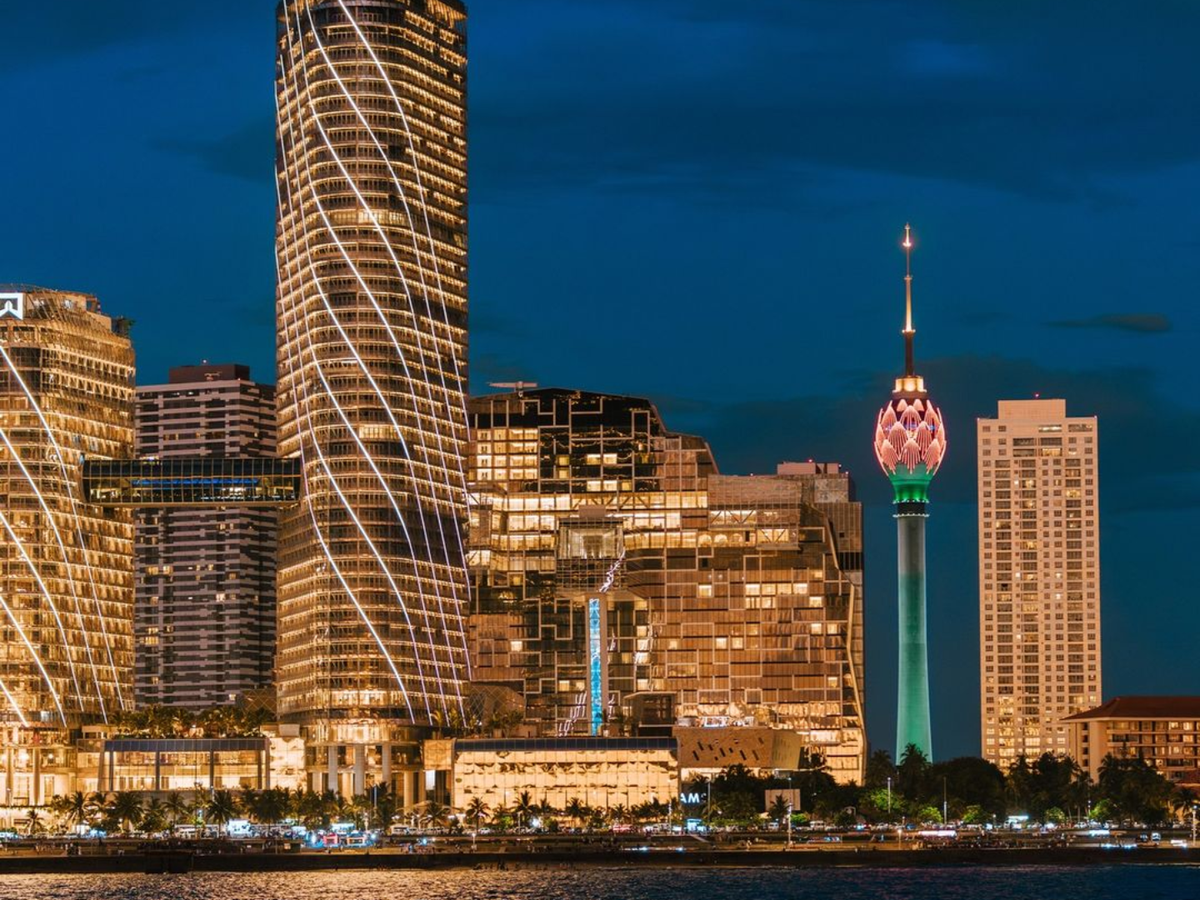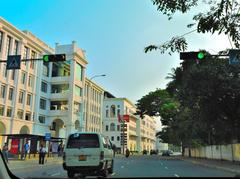
Visiting Colombo Lotus Tower: Hours, Tickets, History, and Tips
Date: 18/07/2024
Introduction
The Colombo Lotus Tower, standing tall at 356 meters (1,168 feet), is a remarkable symbol of Sri Lanka’s aspirations, blending cultural significance with modern engineering. Officially inaugurated in September 2019, this iconic structure is the tallest self-supported tower in South Asia, representing the nation’s technological advancements and cultural rebirth. Inspired by the lotus flower, a significant symbol in Sri Lankan culture and Buddhism, the tower epitomizes purity, spiritual enlightenment, and national prosperity. (Colombo Lotus Tower History)
Table of Contents
- Introduction
- Historical Background and Cultural Significance
- Architectural Marvel
- Visitor Information
- FAQs
- Conclusion
- Sources
Historical Background and Cultural Significance
The Lotus Tower’s Historical Journey
While the Colombo Lotus Tower stands as a gleaming symbol of modern Sri Lanka, its journey to completion is deeply intertwined with the nation’s history and aspirations. Initially conceived in the late 1990s during President Chandrika Kumaratunga’s tenure, the project faced numerous delays before gaining momentum under President Mahinda Rajapaksa’s leadership.
A Shift in Vision and Location
Revived with a more ambitious vision, the project shifted to its current prominent position in Colombo, overlooking Beira Lake. The lotus flower, significant in Sri Lankan culture and Buddhism, was chosen as the design inspiration, symbolizing purity, spiritual awakening, and national prosperity.
Construction and Delays
Construction commenced in 2012 with Chinese involvement and funding. However, the project faced delays due to funding issues, design changes, and political transitions, becoming a subject of public debate.
Inauguration and Cultural Significance
In September 2019, the Colombo Lotus Tower was officially inaugurated, marking a milestone in Sri Lanka’s post-war development. Beyond its architectural grandeur, the tower represents Sri Lanka’s resilience and progress, embodying a narrative of cultural identity and aspirations.
Architectural Marvel
Inspiration and Symbolism
The tower’s design draws inspiration from the lotus flower, a symbol of purity and spiritual enlightenment in Sri Lankan culture and Buddhism. This motif is prominent throughout the tower’s structure, adding cultural significance to its modern aesthetic.
Structural Design and Height
Standing at 356 meters (1,168 feet), the tower is the tallest self-supported structure in South Asia, showcasing Sri Lanka’s engineering capabilities.
Multifaceted Functionality
The Colombo Lotus Tower serves as a hub for communication, entertainment, and leisure. Its distinct sections include a telecommunications museum, conference center, revolving restaurant, observation decks, shopping mall, and luxury hotel.
Key Features
- Revolving Restaurant: Situated at 233 meters (764 feet), offering 360-degree views of Colombo.
- Observation Decks: Providing panoramic views of the city, the Indian Ocean, and surrounding landscapes.
- Shopping Mall: Catering to diverse retail needs.
- Luxury Hotel: Offering opulent stays with top-notch amenities.
- Telecommunications Museum: Showcasing the history of telecommunications in Sri Lanka.
- Conference Center: Equipped for business meetings and events.
Visitor Information
Visiting Hours
The Colombo Lotus Tower is open daily from 9:00 AM to 11:00 PM. Check for any changes during public holidays or special events.
Ticket Prices
Tickets can be purchased at the entrance or online. General admission prices are:
- Adults: LKR 500
- Children (under 12): LKR 200
- Senior Citizens: LKR 300
Special rates are available for groups and guided tours. Advance booking is recommended to avoid long queues.
Travel Tips and Nearby Attractions
Getting There
The tower is easily accessible by public transport, taxis, and private vehicles, with ample parking available.
Nearby Historical Sites
Explore nearby attractions like Gangaramaya Temple, the National Museum of Colombo, and the Old Parliament Building to enrich your visit with Sri Lanka’s cultural heritage.
Special Events and Tours
The tower hosts cultural events, exhibitions, and performances. Check the official website for an updated schedule. Guided tours are available and provide detailed insights into the tower’s history and architecture.
Accessibility
The tower is wheelchair accessible, with ramps, elevators, and restrooms designed for visitors with disabilities.
Photography
Capture stunning photographs from the observation deck and the base of the tower. The surrounding Beira Lake also provides picturesque settings.
Dining Options
In addition to the revolving restaurant, several cafes and food stalls offer a range of snacks, beverages, and light meals.
Souvenirs
Browse shops within the tower for unique souvenirs and gifts to commemorate your visit.
Safety and Security
The tower maintains high safety and security standards with security personnel and CCTV cameras throughout the premises.
FAQs
-
What are the visiting hours?
- The tower is open daily from 9:00 AM to 11:00 PM.
-
How much are tickets?
- General admission tickets start at LKR 500 for adults and LKR 200 for children.
-
Is the tower wheelchair accessible?
- Yes, it is fully accessible for wheelchair users.
-
What are some nearby attractions?
- Nearby attractions include Gangaramaya Temple, Independence Square, and the Colombo National Museum.
Conclusion
The Colombo Lotus Tower is more than an architectural marvel; it symbolizes Sri Lanka’s resilience, progress, and cultural pride. From its inception in the late 1990s to its grand inauguration in 2019, the tower has become a beacon of modernity and national unity. Its design, inspired by the lotus flower, reflects the country’s rich cultural heritage and aspirations for a brighter future. Visitors can enjoy panoramic views, luxurious dining, cultural exhibitions, and modern entertainment, making it a must-visit destination in Sri Lanka. (Explore Colombo Lotus Tower)

